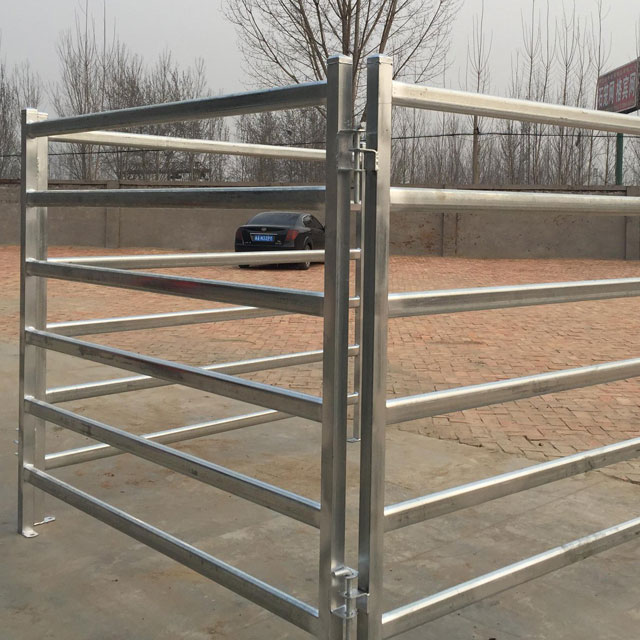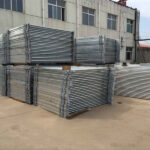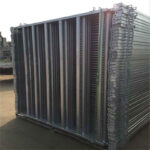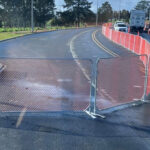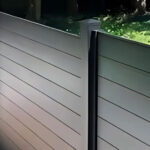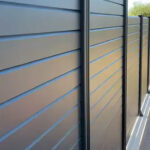Unlocking the Versatility of Cattle Panels: A Comprehensive Guide to Fencing and Beyond
Are you looking for a versatile, durable, and cost-effective fencing solution for your farm or homestead? Look no further than cattle panels! These robust wire mesh panels offer a world of possibilities beyond just containing livestock. In this comprehensive guide, we’ll explore the many uses of cattle panels, from traditional fencing to creative DIY projects. Whether you’re a seasoned farmer or a curious homesteader, you’ll discover why cattle panels are a must-have tool in your agricultural arsenal.
What Are Cattle Panels and Why Are They So Popular?
Cattle panels, also known as livestock panels or hog panels, are heavy-duty welded wire mesh panels typically used for fencing and animal containment. But what makes them stand out from other fencing options?
The Anatomy of a Cattle Panel
Cattle panels are typically made from galvanized steel wire, which provides excellent durability and resistance to rust. Here are some key features:
- Rozmiar: Standard panels are usually 16 feet long and 50-52 inches tall.
- Wire gauge: The wire used is typically 4-gauge, making it sturdy enough to withstand pressure from large animals.
- Mesh pattern: The grid pattern varies, with smaller openings at the bottom (to prevent small animals from escaping) and larger openings at the top.
Why Farmers and Homesteaders Love Cattle Panels
- Wszechstronność: From fencing to gardening, the uses are nearly endless.
- Trwałość: Galvanized steel construction ensures long-lasting performance.
- Ruchliwość: Despite their strength, cattle panels are relatively lightweight and easy to move.
- Ekonomiczne: Compared to other fencing options, cattle panels offer great value for money.
- Niskie koszty utrzymania: Once installed, they require minimal upkeep.
How to Install a Cattle Panel Fence
Creating a sturdy fence with cattle panels is a straightforward process. Here’s a step-by-step guide:
- Gather materials: You’ll need cattle panels, t-posts, fencing clips, and tools like a post driver and wire cutters.
- Mark your fence line: Use stakes and string to outline your fence perimeter.
- Install t-posts: Drive t-posts into the ground every 8 feet along your fence line.
- Attach panels: Secure the cattle panels to the t-posts using fencing clips.
- Overlap panels: For a continuous fence, overlap the ends of adjacent panels by 4-6 inches.
- Secure the bottom: Use additional clips or wire to attach the bottom of the panels to the t-posts.
Pro tip: For added stability, consider using a t-post in the center of each panel, especially in areas with high winds or pressure from animals.
Beyond Fencing: Creative Uses for Cattle Panels
The versatility of cattle panels extends far beyond traditional fencing. Here are some innovative ways to put these panels to work:
1. Garden Trellis
Create a sturdy and attractive trellis for climbing plants like pole beans, peas, and cucumbers. Simply arch a cattle panel between two support posts and secure it in place.
2. Raised Bed Gardens
Form circular or rectangular raised beds by bending cattle panels and securing them with stakes. Line with landscape fabric before filling with soil.
3. Livestock Shelters
Construct quick, portable shelters for goats, sheep, or other small livestock by arching panels and covering them with tarps or corrugated metal.
4. Compost Bins
Create durable, well-ventilated compost bins by forming cattle panels into cylinders and securing them with wire or zip ties.
5. Chicken Runs
Build a secure outdoor area for your chickens by using cattle panels for the walls and roof of a run.
Maintenance and Care of Cattle Panel Fences
While cattle panels are low-maintenance, proper care can extend their lifespan significantly:
- Regularne kontrole: Walk the fence line periodically to check for damage or loose connections.
- Tighten connections: Re-secure any loose fencing clips or wire ties.
- Address rust: If you notice any rust spots, clean them with a wire brush and apply a rust-inhibiting paint.
- Vegetation control: Keep weeds and vines from growing on the fence, as they can cause damage over time.
Frequently Asked Questions About Cattle Panels
- How long do cattle panels last? With proper care, galvanized cattle panels can last 20 years or more.
- Can cattle panels be cut to size? Yes, you can cut cattle panels using bolt cutters or an angle grinder with a metal-cutting blade.
- Are cattle panels suitable for all types of livestock? While effective for many animals, very small livestock like chickens may require additional measures to prevent escape.
- Can cattle panels be used for deer fencing? While they can deter some deer, determined deer may be able to jump over standard cattle panels. Consider using taller panels or additional deterrents for deer control.
- How do cattle panels compare to field fence or welded wire? Cattle panels are generally sturdier and more rigid than field fence or welded wire, making them ideal for containing larger animals and creating structures.
Conclusion: The Power of Versatility
Cattle panels offer an impressive combination of strength, versatility, and cost-effectiveness that make them a valuable asset for any farm or homestead. From creating sturdy fences to crafting innovative garden structures, the possibilities are limited only by your imagination. By understanding the proper installation techniques and exploring creative applications, you can unlock the full potential of these versatile panels.Whether you’re a seasoned farmer looking to upgrade your fencing or a DIY enthusiast seeking new project ideas, cattle panels deserve a place in your toolkit. So why not give them a try? You might just discover your new favorite multipurpose farm solution!
Key Takeaways:
- Cattle panels are versatile, durable, and cost-effective fencing solutions.
- Proper installation involves using t-posts and fencing clips for a secure fence.
- Creative uses include garden trellises, raised beds, and livestock shelters.
- Regular maintenance can significantly extend the lifespan of cattle panel fences.
- With their many applications, cattle panels are a valuable asset for farms and homesteads of all sizes.
Explore our selection of high-quality galvanised cattle panels to start your next project today!
